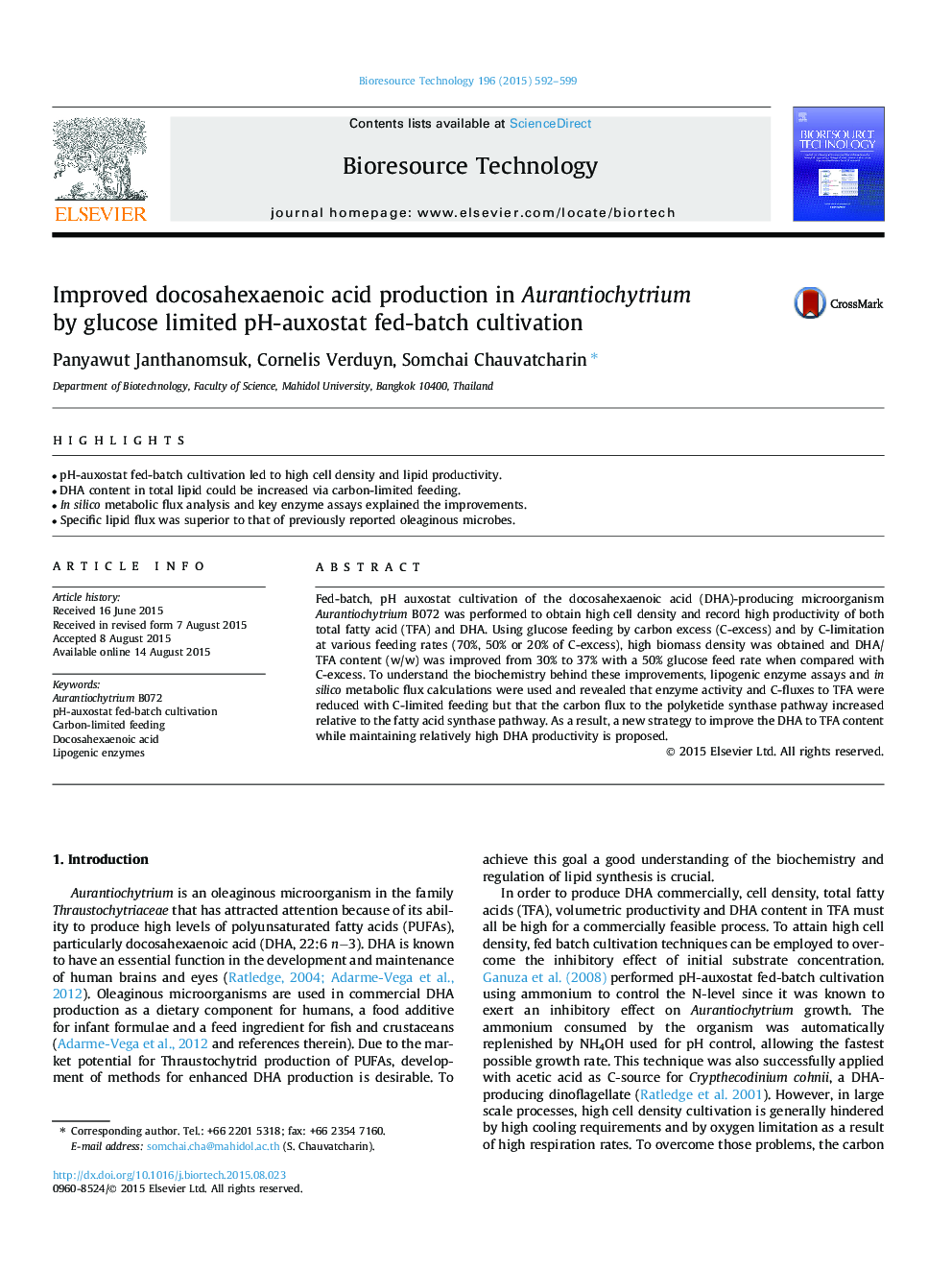| Article ID | Journal | Published Year | Pages | File Type |
|---|---|---|---|---|
| 7074029 | Bioresource Technology | 2015 | 8 Pages |
Abstract
Fed-batch, pH auxostat cultivation of the docosahexaenoic acid (DHA)-producing microorganism Aurantiochytrium B072 was performed to obtain high cell density and record high productivity of both total fatty acid (TFA) and DHA. Using glucose feeding by carbon excess (C-excess) and by C-limitation at various feeding rates (70%, 50% or 20% of C-excess), high biomass density was obtained and DHA/TFA content (w/w) was improved from 30% to 37% with a 50% glucose feed rate when compared with C-excess. To understand the biochemistry behind these improvements, lipogenic enzyme assays and in silico metabolic flux calculations were used and revealed that enzyme activity and C-fluxes to TFA were reduced with C-limited feeding but that the carbon flux to the polyketide synthase pathway increased relative to the fatty acid synthase pathway. As a result, a new strategy to improve the DHA to TFA content while maintaining relatively high DHA productivity is proposed.
Related Topics
Physical Sciences and Engineering
Chemical Engineering
Process Chemistry and Technology
Authors
Panyawut Janthanomsuk, Cornelis Verduyn, Somchai Chauvatcharin,
